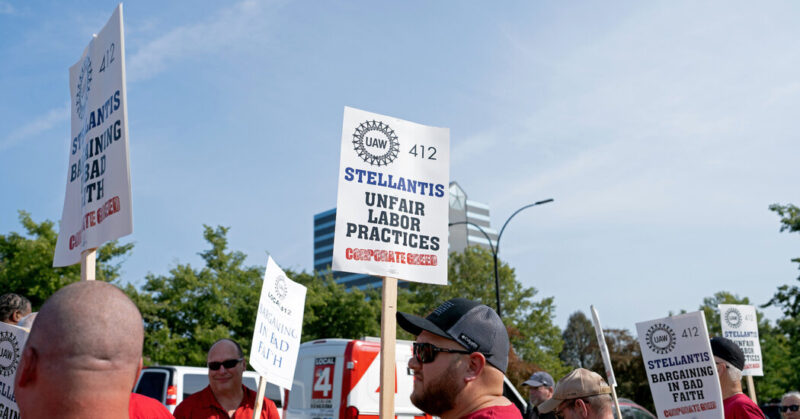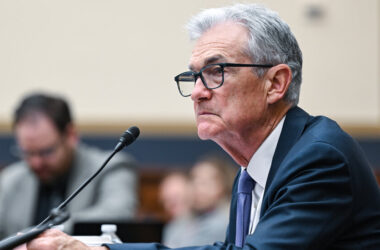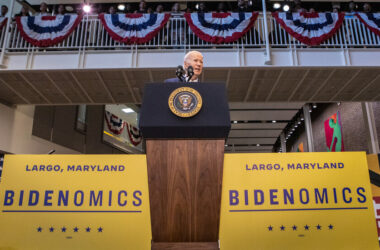Negotiations between the United Auto Workers (UAW) union and the three major U.S. automakers – Ford Motor, General Motors, and Stellantis – are far from being resolved. However, Ford Motor has managed to avoid a second strike in Canada by reaching a tentative labor agreement with Unifor, Canada’s main auto union.
The agreement between Ford and Unifor was reached just minutes before the union’s strike deadline of 11:59 p.m. on Tuesday. While the terms of the agreement were not disclosed, Unifor stated that Ford had made a “substantive offer.” The union believes that this agreement will benefit generations of autoworkers in Canada.
Meanwhile, in the United States, the UAW has instructed nearly 13,000 workers to walk out of their jobs at three plants owned by G.M., Ford, and Stellantis. The UAW is seeking a 40 percent increase in wages over four years, as well as improvements in pension plans, company-paid health care for retirees, and shorter working hours.
At the same time, the union is looking to end the practice of new hires being paid significantly lower wages compared to senior union workers. Currently, new hires receive approximately $17 per hour, while senior workers earn $32 per hour. The UAW argues that the increase in wages should mirror the substantial rise in pay of the automakers’ chief executives over the past four years.
Although Ford’s labor agreement in Canada is a positive development, it does not directly impact the UAW strikes in the United States. The negotiations in the U.S. have made only limited progress since the strikes began last week.
With the UAW considering expanding the strikes to additional plants this week, tensions remain high. The UAW’s President, Shawn Fain, has taken a more combative approach and has received support from Senator Bernie Sanders.
On the other side, the automakers, such as G.M., argue that the demands made by the UAW are financially unsustainable. G.M. has offered a 20 percent increase in wages over the next four years, which would bring the top wage to over $39 per hour. However, the UAW believes this is insufficient and continues to push for their desired wage increases and improvements in other areas.
As negotiations continue, it remains to be seen how the disputes will be resolved and whether both sides can reach a mutually beneficial agreement.
WealthNationUSA Perspective: The ongoing labor negotiations and strikes in the auto industry highlight the challenges faced by workers and management in balancing fair compensation with financial sustainability. While both sides have valid concerns and demands, it is crucial for them to find common ground and ensure the long-term success of the industry. These negotiations also underscore the importance of strong labor unions in advocating for workers’ rights and fair treatment. As the auto industry undergoes significant changes, including the shift to electric vehicles, it is crucial for both management and workers to collaborate and adapt to the evolving landscape. Achieving a balance that benefits all stakeholders will be vital for the industry’s growth and prosperity.








